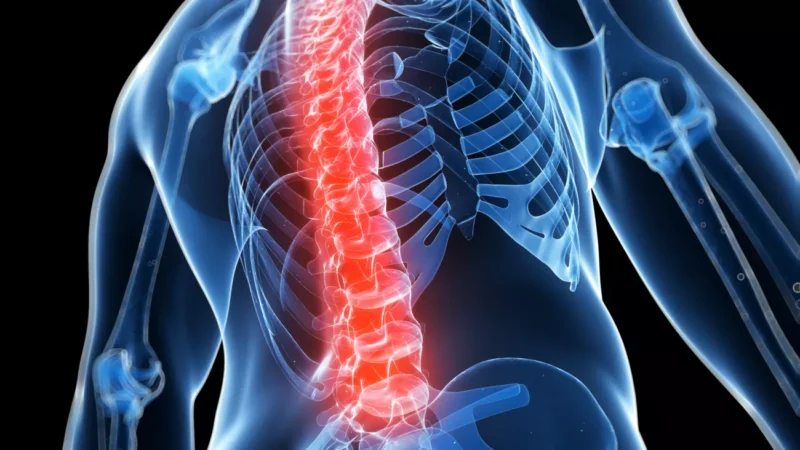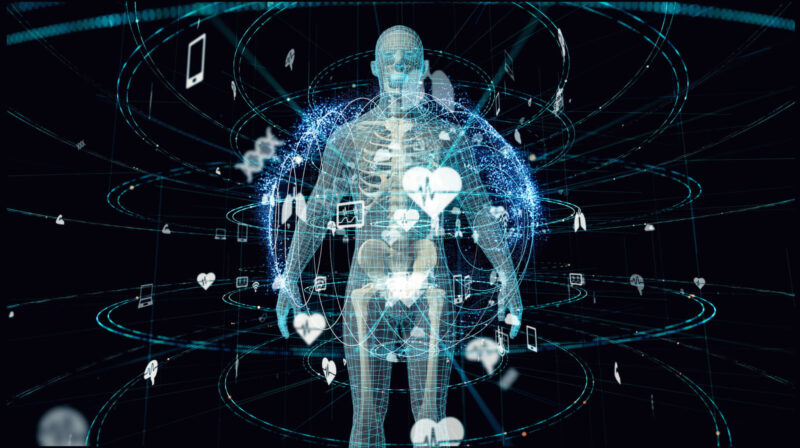Are you tired of surrendering to the grip of spinal stenosis? You’re not alone. Countless individuals face the challenges of this condition, where the narrowing of the spinal canal wreaks havoc on their well-being, leading to a diminished quality of life.
Reclaiming your freedom from the clutches of spinal stenosis requires finding the perfect treatment to alleviate your symptoms and restore your overall function. Luckily, you have various options, from medications and physical therapy to injections and surgery. Each choice comes with its advantages and potential risks. Still, the key lies in tailoring the treatment to fit your specific condition and personal preferences.
And that’s where this engaging blog aims to equip you with a comprehensive understanding of spinal stenosis and its profound impact on your daily life. With this knowledge as your weapon, you’ll be empowered to make well-informed decisions about the treatment alternatives that suit you best.
Symptoms and Common Causes of Lumbar Spinal Stenosis

Your spine, a delicate masterpiece of bones, nerves, and ligaments, is a sanctuary of strength and flexibility. But what happens when the harmony within this intricate structure is disrupted? Enter spinal stenosis, a stealthy condition that threatens to narrow the pathway of your dreams.
In spinal anatomy, the spinal canal is the gateway through which your spinal cord and nerves traverse. However, when spinal stenosis rears its head, this once-spacious passage becomes constricted, like a winding road barricaded by bone spurs and overgrown ligaments. The consequences are dire, as the pressure mounts on your spinal cord and nerves, triggering a symphony of discomfort and restricted mobility.
The symptoms of lumbar spinal stenosis, the most common form of this condition, can leave even the bravest souls longing for relief.
Picture this: A dull ache in your lower back, gradually extending its grasp to your legs causing back pain and weakness. Not to mention the unsettling numbness that threatens to steal your freedom of movement. Walking or standing for prolonged periods becomes an excruciating feat as if your own body has become an impediment to your aspirations.
Non-Surgical Treatment Options
If the idea of surgery makes you apprehensive, there’s good news. Non-surgical treatments offer conservative approaches to managing spinal stenosis without going under the knife. These treatments encompass a range of methods, including physical therapy, medication, and lifestyle adjustments.
Physical therapy involves tailored exercises and stretches to strengthen your muscles and enhance your spine’s flexibility. It can alleviate pain, improve mobility, and prevent further injuries.
Medications used in non-surgical treatments include anti-inflammatory drugs, muscle relaxants, and painkillers. These medications work to reduce inflammation and alleviate discomfort. Additionally, lifestyle modifications such as weight loss, quitting smoking, and improving posture can significantly reduce stress on your spine and promote healing.
Exploring Non-Surgical Solutions for Spinal Stenosis

Before jumping into the realm of surgery, it’s essential to consider the non-surgical treatments available to manage spinal stenosis. These conservative approaches can work wonders, sparing you from invasive procedures while effectively addressing your symptoms.
The Power of Physical Therapy
Physical therapy emerges as a trusted ally in the battle against spinal stenosis. With customized combinations of exercises and stretches, physical therapists can strategically strengthen your muscles and enhance the flexibility of your spine. This comprehensive approach provides relief from pain, improves your mobility, and fortifies your spine against future injuries. Through targeted interventions, physical therapy can be a game-changer, helping you regain control and functionality in your everyday life.
Medications as Warriors
Medications become your secret weapon when it comes to combatting spinal stenosis pain. The elite squad of anti-inflammatory drugs, muscle relaxants, and painkillers join forces to wage war on inflammation and offer much-needed comfort. These medications can help alleviate pain, reduce swelling, and promote relaxation, allowing you to engage in activities with greater ease and comfort.
Embracing a Lifestyle of Well-Being
But why stop at therapies and medications alone? Embracing a lifestyle that prioritizes your well-being can make a difference in managing spinal stenosis. Simple yet impactful changes can yield monumental results. For instance, shedding those extra pounds can significantly reduce the stress on your spinal column, providing relief and easing the burden on your nerves. Bidding farewell to tobacco benefits your overall health and promotes better blood circulation and tissue oxygenation, supporting the healing process.
In addition, adopting postural habits that align with the natural curvature of your spine can help alleviate discomfort and prevent further aggravation of symptoms. This conscious adjustment in how you sit, stand, and move can create a nurturing environment for healing and empower you to take control of your condition.
Surgical Treatment Options

Should the battle against spinal stenosis escalate, surgical interventions become a formidable option. Meet the surgical options that can liberate you from the clutches of pain:
- Laminectomy: The lamina, a vertebra segment, becomes the target in this procedure. By skillfully removing a portion of the lamina, space within the spinal canal is reclaimed, relieving the pressure on the nerves and, in turn, alleviating the pain and other symptoms of spinal stenosis.
- Laminotomy: Consider it a more refined version of the previous procedure. When precision is paramount, laminotomy steps onto the scene, targeting a smaller section of the lamina. This surgical marvel allows for meticulous decompression of the affected nerves, ensuring maximum effectiveness.
- Spinal Fusion: This surgical technique involves using bone grafts or implants to fuse two or more vertebrae. The result? Enhanced stability, reduced pain, and a restored sense of well-being.
- Microspine Surgery®: Innovation meets surgery in this groundbreaking approach. By employing minimally invasive methods, specialized instruments, and advanced imaging technology, Microspine surgery® minimizes tissue damage and scarring, allowing for a speedier recovery and a swifter return to the joys of life.
Exploring the Benefits of Surgery for People with Spinal Stenosis
When it comes to spinal stenosis, surgery can offer significant advantages for those seeking relief from their symptoms. This condition, characterized by the narrowing of the spinal canal, can cause immense pain, numbness, and weakness. Surgical interventions aim to address the root cause of the issue, providing immediate relief and improving overall well-being.
Immediate Symptom Relief
One of the most notable advantages of surgical treatment is the potential for immediate symptom relief. Surgery can alleviate pain, numbness, and weakness by decompressing the affected nerve roots and addressing the underlying cause. This relief can be life-changing for individuals grappling with these debilitating symptoms. Imagine being able to move, walk, and perform daily activities without constant pain and discomfort.
Addressing the Underlying Cause
Surgical procedures for spinal stenosis provide relief and address the root cause of the condition. They can correct issues such as bone spurs, ligament thickening, or herniated discs that are causing the narrowing of the spinal canal. By removing these obstructions, surgeons create more space for the nerves, allowing them to function properly. Surgical interventions like spinal fusion can also restore spinal stability and correct deformities, ensuring better patient outcomes.
Understanding the Risks
While surgical treatment offers remarkable benefits, being aware of the associated risks and potential complications is essential. As with any surgical procedure, there are risks involved. These may include infection, blood clots, bleeding, adverse reactions to anesthesia, nerve damage, or tears in the protective covering of the spinal cord (dural tears). It is crucial to thoroughly discuss with your healthcare provider to understand the potential risks and make an informed decision.
Recovery and Rehabilitation
After surgery, a period of recovery and rehabilitation is typically necessary. It is important to understand that this phase may involve discomfort and limited mobility as your body heals. However, working closely with your medical team, including physical therapists, can help optimize your recovery. Physical therapists specialize in assisting patients with spinal stenosis in regaining strength, mobility, and function. They can provide personalized exercises and techniques to aid in your rehabilitation journey.
Tailoring Medical Treatments: Personalized Medicine for Individual Patients

The journey toward healing is deeply personal, and there is no one-size-fits-all solution. You are unique, and your journey toward conquering spinal stenosis should reflect that. Consider the following key factors when making your decision:
The severity of your symptoms: Gauge the impact of your symptoms on your daily life and functioning. Are they mild, moderate, or severe? This assessment will help you anticipate potential improvements or deterioration over time.
Patient preferences: Your goals, expectations, values, and beliefs regarding treatment should take center stage. Reflect on your comfort level with the risks and benefits of surgical or non-surgical options.
Age: The passage of time plays a role in your body’s resilience and ability to bounce back. Consider age-related factors that might affect the likelihood of complications or side effects.
Overall health: Evaluate your general well-being and its influence on the suitability of different treatment options. Consider any co-existing medical conditions and their potential impact on your chosen path.
Presence of other medical conditions: Unearth any additional health issues connected to or affected by your spinal stenosis. Factors like diabetes, heart disease, or osteoporosis can sway your treatment decision, so assess their significance.
Remember, thorough discussions and open communication are your allies in this endeavor. Engage with professionals who understand your unique circumstances and work together to craft a tailored plan that meets your needs and desires.
Take Charge of Your Spinal Stenosis Journey
It’s time to seize control of your life and leave spinal stenosis in the rearview mirror. Don’t let it dictate your every move. Trust in the expertise of our seasoned professionals at www.royalspinesurgery.com to provide personalized care and guide you toward the ideal treatment option.
Whether surgery or non-surgical methods beckon, we’re here to equip you with the knowledge and support necessary to make an informed decision based on your circumstances. Take that crucial first step toward relief today!

